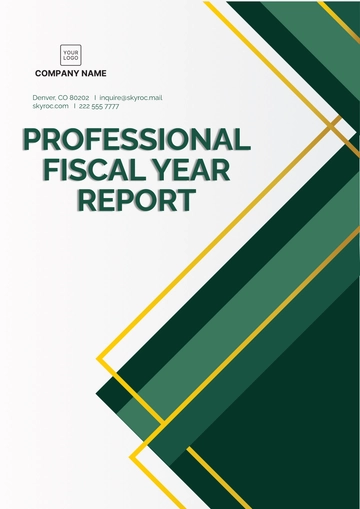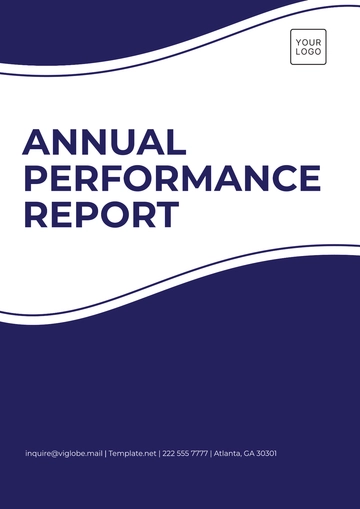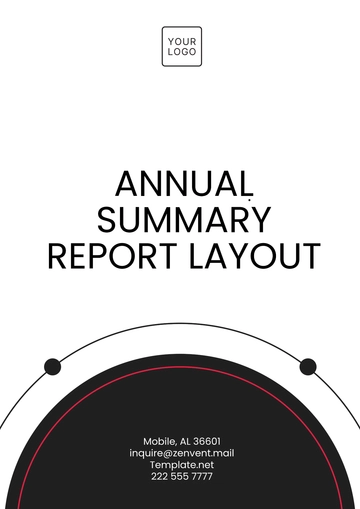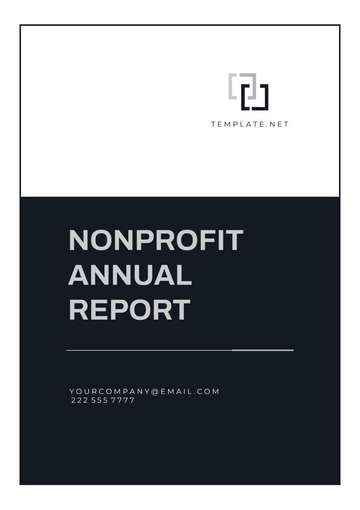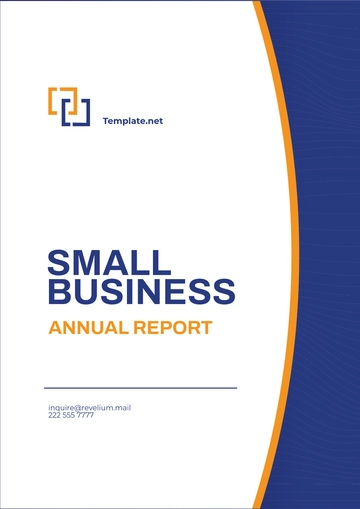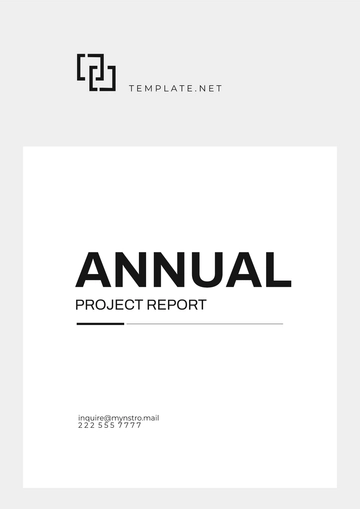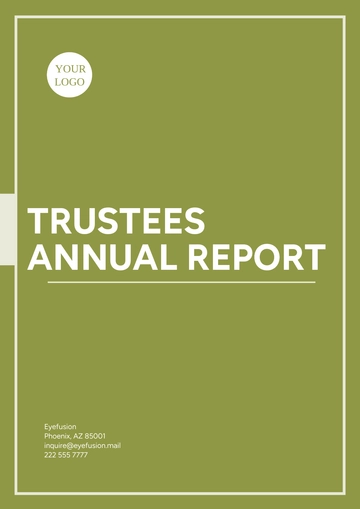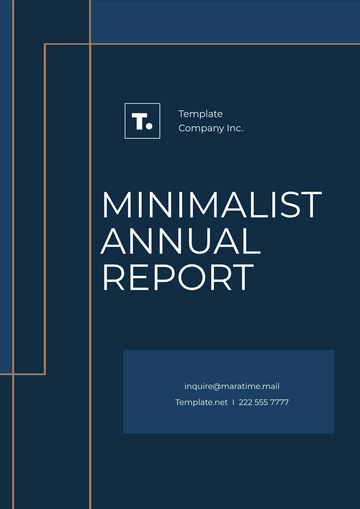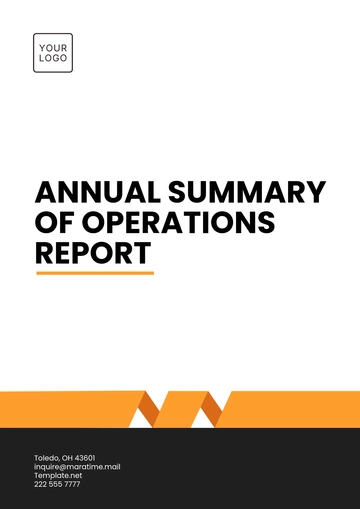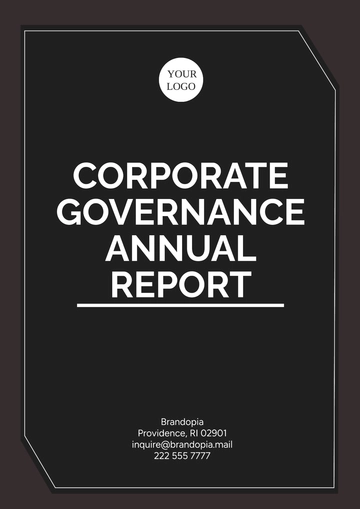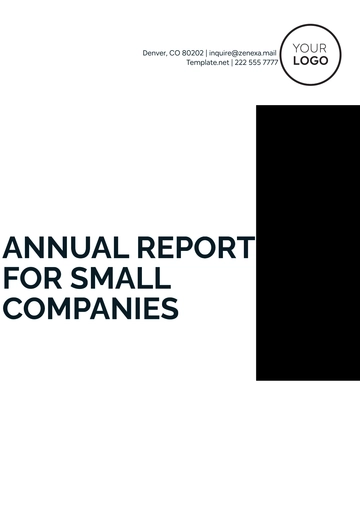Free Agriculture Greenhouse Gas Emissions Report
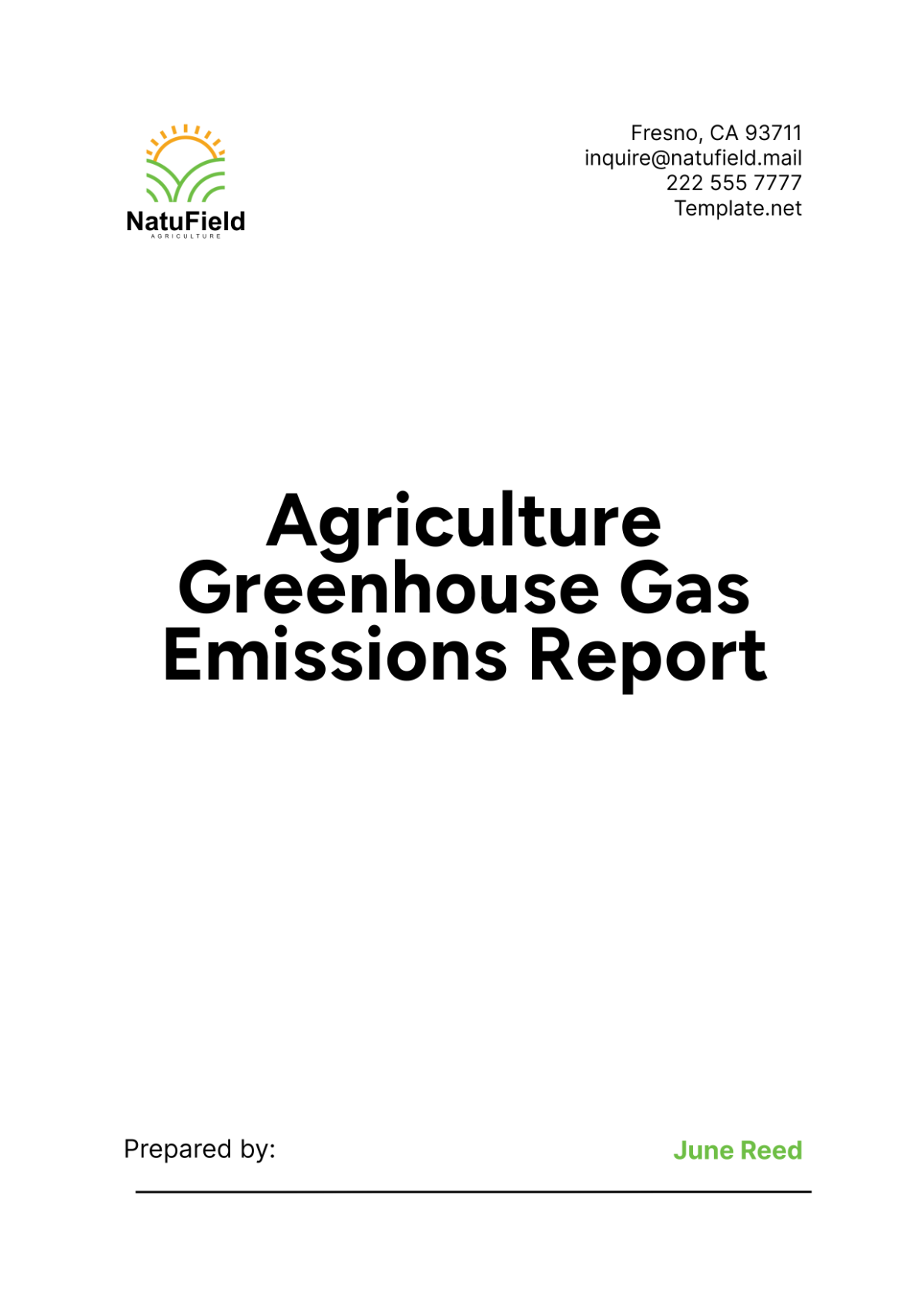
I. Executive Summary
A. Introduction
In 2050, the global agricultural sector faces unprecedented challenges in mitigating greenhouse gas (GHG) emissions while meeting the growing demand for food, feed, fiber, and fuel. Agriculture contributes significantly to global GHG emissions, with estimates suggesting it accounts for approximately 24% of total emissions globally. This report by [Your Company Name] delves into the complex dynamics of agricultural emissions, providing a detailed analysis of emission sources, trends, and mitigation strategies.
B. Key Findings
Current Emission Levels: The agriculture sector's contribution to GHG emissions is substantial, encompassing emissions from crop production, livestock, and land-use changes. Globally, agriculture emits approximately 10 billion metric tons of carbon dioxide equivalents (CO2-eq) annually, a figure that underscores its significant impact on climate change.
Emission Trends: Over the past few decades, agricultural emissions have shown an upward trajectory, driven primarily by population growth, dietary changes, and agricultural expansion. Since 2000, emissions have increased by 20%, reflecting intensified agricultural activities to meet the demands of a growing global population.
Mitigation Strategies: Effective mitigation strategies are crucial for curbing agricultural emissions. Strategies such as improved crop management, advanced livestock practices, and the adoption of sustainable agricultural technologies show promise in reducing emissions while enhancing productivity and resilience to climate change impacts.
C. Recommendations
Policy Development: Policymakers are urged to prioritize the development and implementation of robust policies that incentivize sustainable agricultural practices. This includes subsidizing green technologies, promoting soil health initiatives, and integrating climate-smart agriculture into national policies and strategies.
Research and Development: Increased investment in research and development (R&D) is essential for innovating new technologies and practices that mitigate agricultural emissions. Collaboration between public and private sectors, as well as academia, can accelerate the development and adoption of climate-resilient agricultural solutions.
Education and Training: Farmers and agricultural stakeholders should receive comprehensive education and training on sustainable practices and technologies. Extension services, farmer field schools, and knowledge-sharing platforms play a crucial role in disseminating information and building capacity for climate-smart agriculture.
II. Introduction
A. Background
Agriculture is not only essential for global food security but also a significant driver of environmental change, including climate change. The sector's reliance on intensive practices, including synthetic fertilizers, irrigation, and mechanization, has led to substantial GHG emissions. Understanding these emissions and their implications is critical for devising strategies to mitigate climate impacts and build resilience in agricultural systems.
B. Purpose of the Report
This report aims to provide a comprehensive assessment of GHG emissions from agricultural activities worldwide. It examines the sources and drivers of emissions, analyzes current emission trends, evaluates existing mitigation strategies, and recommends actionable measures to reduce emissions sustainably. By informing policymakers, researchers, and practitioners, the report seeks to catalyze informed decision-making and collective action towards a low-carbon agricultural future.
C. Scope of the Report
The scope of this report encompasses all major sources of GHG emissions associated with agriculture, including:
Crop Production: Emissions from soil management, fertilizer use, and crop residue decomposition.
Livestock: Emissions from enteric fermentation, manure management, and feed production.
Land-Use Changes: Emissions from deforestation, land conversion, and soil carbon loss.
The report evaluates regional variations in emissions, identifies key drivers of emission trends, and highlights successful case studies and initiatives aimed at reducing agricultural emissions globally.
III. Greenhouse Gas Emissions in Agriculture
A. Sources of Emissions
Crop Production: Agriculture's emissions from crop production are multifaceted and include:
CO2 Emissions: Carbon dioxide emissions primarily arise from soil cultivation practices such as plowing, tilling, and soil erosion. These activities disrupt soil organic matter, releasing stored carbon into the atmosphere. In 2050, global CO2 emissions from agricultural soils are estimated at 3.3 billion metric tons annually.
Nitrous Oxide (N2O) Emissions: Nitrous oxide is a potent GHG emitted from agricultural soils, particularly during fertilizer application. The use of nitrogen-based fertilizers contributes significantly to N2O emissions, which have a warming potential far greater than CO2. Annual global emissions from fertilizer use in agriculture are projected to reach 1.2 million metric tons of CO2-eq by 2050.
Methane (CH4) Emissions: Methane emissions in agriculture primarily originate from flooded rice paddies and anaerobic conditions in wetland soils. In 2050, global methane emissions from rice cultivation are estimated at 600 million metric tons annually.
Livestock: Livestock production is a major source of agricultural emissions, contributing primarily through:
Enteric Fermentation: Ruminant animals, such as cattle, sheep, and goats, produce methane during digestion. Enteric fermentation is the largest source of methane emissions from livestock, accounting for approximately 2.5 billion metric tons of CO2-eq annually by 2050.
Manure Management: Improper handling and storage of animal manure lead to emissions of methane and nitrous oxide. Globally, emissions from manure management are projected to reach 900,000 metric tons of CO2-eq annually by 2050.
Land-Use Changes: Agricultural expansion and land-use changes, including deforestation and conversion of natural habitats to cropland, release stored carbon into the atmosphere:
Deforestation: Deforestation for agricultural purposes releases significant amounts of carbon dioxide stored in trees and soil organic matter. In 2050, annual global emissions from deforestation in agriculture are estimated at 4.0 billion metric tons of CO2-eq.
Soil Carbon Loss: The conversion of natural ecosystems, such as forests and grasslands, to agricultural land leads to soil carbon loss. This process contributes an additional 1.0 billion metric tons of CO2-eq annually to global emissions.
B. Emission Trends
Historical Trends: Since the beginning of the 21st century, agricultural emissions have steadily increased due to population growth, dietary changes, and agricultural intensification. Between 2000 and 2020, emissions rose by 20%, reflecting increased global food demand and expanding agricultural frontiers.
Current Trends: As of 2050, agricultural emissions continue to rise, driven by ongoing population growth and dietary shifts towards higher meat and dairy consumption. Developing regions, in particular, are experiencing accelerated emissions growth as they expand agricultural production to meet local and global food demands.
Projected Trends: Without intervention, global agricultural emissions are projected to increase by an additional 20% by 2070. This trajectory poses significant challenges for achieving climate stabilization goals outlined in international agreements such as the Paris Agreement. Effective mitigation measures are essential to bend the emissions curve and mitigate future climate impacts.
C. Regional Variations
Developed Countries: Agricultural emissions in developed countries have stabilized or even declined in recent years due to advancements in technology, policy interventions, and shifts towards more sustainable farming practices. In 2050, emissions from developed countries are estimated at 2.5 billion metric tons of CO2-eq annually.
Developing Countries: In contrast, emissions from agriculture in developing countries continue to rise due to expanding agricultural frontiers, population growth, and limited adoption of sustainable farming practices. By 2050, emissions from developing countries are projected to reach 7.5 billion metric tons of CO2-eq annually.
Case Studies: Regional case studies illustrate diverse approaches and outcomes in addressing agricultural emissions:
Brazil: Brazil has made significant strides in reducing emissions from deforestation through policies aimed at curbing illegal land clearing and promoting sustainable land use practices in the Amazon. Since the implementation of the Zero Deforestation Law in 2030, Brazil has reduced deforestation rates by 50%, leading to a corresponding decrease in CO2 emissions by 1.5 billion metric tons annually.
India: India's agricultural emissions are dominated by methane from rice paddies and enteric fermentation from livestock. Initiatives such as the Zero-Budget Natural Farming (ZBNF) program promote organic farming methods that reduce reliance on synthetic inputs, resulting in a 30% reduction in N2O emissions and improved soil health.
European Union: The European Union's Common Agricultural Policy (CAP) has supported initiatives to reduce emissions through sustainable farming practices, including precision agriculture, agroforestry, and renewable energy integration. These efforts have collectively reduced agricultural emissions by 25% across participating regions.
IV. Mitigation Strategies
A. Improved Crop Management
Precision Agriculture: Precision agriculture utilizes advanced technologies such as remote sensing, GPS guidance systems, and data analytics to optimize input use (e.g., fertilizers, pesticides, water) based on crop needs and environmental conditions. By minimizing nutrient runoff and enhancing soil health, precision agriculture practices can reduce N2O emissions from fertilizers by up to 30%.
Crop Rotation and Diversity: Rotating crops and diversifying crop species help maintain soil fertility, suppress pests and diseases, and reduce the need for synthetic fertilizers. Studies show that diversified cropping systems can enhance soil carbon sequestration and decrease GHG emissions by approximately 20% compared to monoculture systems.
Conservation Tillage: Reduced tillage or conservation tillage practices minimize soil disturbance, preserving soil organic carbon and reducing CO2 emissions from soil respiration. Conservation tillage has been shown to reduce CO2 emissions by 50-60% compared to conventional tillage methods, making it a critical practice for sustainable agriculture.
B. Advanced Livestock Management
Dietary Supplements: Adding dietary supplements such as methane inhibitors (e.g., seaweed extracts) to livestock feed can reduce methane emissions from enteric fermentation by up to 25%. Research into feed additives and nutritional strategies aims to improve feed efficiency and reduce the carbon footprint of livestock production.
Manure Management: Improved manure management practices, such as anaerobic digestion and composting, can capture methane emissions for energy use while minimizing methane and nitrous oxide emissions from stored manure. These practices have the potential to reduce emissions by 50% compared to traditional manure handling methods.
Breeding and Genetics: Selective breeding for low-emission livestock and genetic improvements in feed conversion efficiency can contribute to emissions reductions. Breeding programs targeting methane-efficient animals have shown promise in reducing methane emissions by 10-15% without compromising productivity.
C. Sustainable Agricultural Technologies
Renewable Energy Integration: Integrating renewable energy sources, such as solar photovoltaics and wind turbines, into agricultural operations can reduce reliance on fossil fuels and mitigate CO2 emissions associated with energy use. On-farm renewable energy generation not only lowers operational costs but also contributes to a net reduction in GHG emissions over the lifecycle of agricultural products.
Biotechnology: Advances in biotechnology, including genetic engineering and biotechnology traits, offer opportunities to develop crop varieties with enhanced nutrient use efficiency, pest resistance, and resilience to climate stress. Biotech crops engineered for reduced nitrogen requirements have the potential to decrease N2O emissions by 15-20% compared to conventional varieties.
Carbon Sequestration Practices: Implementing practices that enhance carbon sequestration in soils and vegetation can offset emissions from agricultural activities. Agroforestry, cover cropping, and rotational grazing are examples of practices that improve soil structure, increase organic matter content, and sequester carbon dioxide from the atmosphere. These practices collectively have the potential to sequester up to 1.5 billion metric tons of CO2 annually, contributing to climate change mitigation efforts.
D. Policy and Economic Incentives
Subsidies for Sustainable Practices: Governments can incentivize farmers to adopt sustainable agricultural practices through financial subsidies and grants. Subsidies for practices such as organic farming, agroecology, and integrated pest management help offset transition costs and promote long-term sustainability.
Carbon Pricing: Implementing carbon pricing mechanisms, such as carbon taxes or cap-and-trade systems, can create financial incentives for emissions reductions across the agricultural sector. By internalizing the cost of carbon emissions, carbon pricing encourages farmers to adopt low-emission technologies and practices while generating revenue for climate mitigation and adaptation efforts.
International Cooperation: Global cooperation and knowledge sharing are essential for accelerating emissions reduction efforts in agriculture. International agreements, partnerships, and collaborative research initiatives facilitate the exchange of best practices, technologies, and funding to support sustainable agriculture and climate resilience worldwide.
V. Case Studies
A. Brazil's Amazon Initiative
Brazil has been at the forefront of efforts to combat deforestation and reduce associated emissions in the Amazon rainforest. Policies such as the Zero Deforestation Law and the Forest Code have strengthened environmental regulations and promoted sustainable land management practices among agricultural producers. Since the enactment of these policies in 2030, Brazil has achieved a 50% reduction in deforestation rates, preserving carbon stocks and mitigating approximately 1.5 billion metric tons of CO2 emissions annually.
B. India's Zero-Budget Natural Farming
India's Zero-Budget Natural Farming (ZBNF) initiative promotes organic farming practices that eliminate the use of synthetic inputs, thereby reducing emissions from chemical fertilizer use and improving soil health. ZBNF techniques, including the application of biofertilizers, crop rotation, and mulching, have contributed to a 30% reduction in N2O emissions and enhanced carbon sequestration in agricultural soils. The initiative supports smallholder farmers in adopting climate-resilient farming methods that reduce greenhouse gas emissions while increasing agricultural productivity and sustainability.
C. European Union's Common Agricultural Policy
The European Union's Common Agricultural Policy (CAP) plays a pivotal role in promoting sustainable agriculture and reducing emissions across member states. CAP initiatives include financial support for farmers transitioning to agroecological practices, investments in precision farming technologies, and incentives for renewable energy adoption on farms. These efforts have collectively reduced agricultural emissions by 25% in participating regions, demonstrating the potential of policy interventions to drive systemic change and foster climate-smart agriculture.
VI. Data and Analysis
A. Emission Data
Global Emissions: As of 2050, global agricultural emissions total approximately 10 billion metric tons of CO2-eq annually. This figure includes emissions from crop production, livestock, and land-use changes, highlighting the sector's significant contribution to global greenhouse gas emissions.
Regional Emissions: Emissions vary significantly across regions due to differences in agricultural practices, land use patterns, and economic development:
North America: Emissions are predominantly from livestock and crop production, totaling 1.5 billion metric tons of CO2-eq annually.
Europe: The adoption of sustainable farming practices has resulted in emissions of 1.2 billion metric tons of CO2-eq annually.
Asia: Rapid agricultural expansion and intensification contribute to emissions totaling 3.5 billion metric tons of CO2-eq annually.
Africa: Emissions are driven by extensive livestock production and land-use changes, amounting to 2.0 billion metric tons of CO2-eq annually.
South America: Deforestation for agriculture remains a significant source of emissions, totaling 1.8 billion metric tons of CO2-eq annually.
B. Mitigation Potential
Improved Crop Management: Adoption of precision agriculture, crop rotation, and conservation tillage practices could potentially reduce emissions by 1.5 billion metric tons of CO2-eq annually.
Advanced Livestock Management: Implementation of dietary supplements, improved manure management, and genetic improvements in livestock could reduce emissions by 1.2 billion metric tons of CO2-eq annually.
Sustainable Technologies: Integration of renewable energy, biotechnological advancements, and carbon sequestration practices could contribute to emissions reductions of up to 2.0 billion metric tons of CO2-eq annually.
C. Tables
Table 1: Current Emissions by Source (2050)
Source | Emissions (Million Metric Tons CO2-eq) |
|---|---|
Crop Production | 3,300 |
Livestock | 3,400 |
Land-Use Changes | 3,300 |
Table 2: Regional Emissions (2050)
Region | Emissions (Million Metric Tons CO2-eq) |
|---|---|
North America | 1,500 |
Europe | 1,200 |
Asia | 3,500 |
Africa | 2,000 |
South America | 1,800 |
VII. Recommendations
A. Policy Development
Incentivizing Sustainable Practices: Governments should provide financial incentives, such as subsidies and tax breaks, to encourage farmers to adopt sustainable agricultural practices. These incentives can offset the costs associated with transitioning to low-emission technologies and practices, making sustainable agriculture more economically viable for farmers.
Strengthening Regulatory Frameworks: Policymakers should strengthen environmental regulations and enforcement mechanisms to ensure compliance with emissions reduction targets and sustainable land use practices. By setting clear guidelines and penalties for non-compliance, governments can create a level playing field and incentivize responsible agricultural practices.
Promoting Climate-Smart Agriculture: Climate-smart agriculture integrates sustainable farming practices, climate resilience, and emissions reduction strategies. Governments should prioritize climate-smart agriculture in national policies and agricultural development plans to build resilience to climate change impacts and achieve sustainable food security.
B. Research and Development
Investing in Innovation: Increased public and private investment in agricultural research and development is crucial for developing innovative technologies and practices that reduce emissions. Research priorities should include improving crop and livestock productivity, enhancing soil carbon sequestration, and developing climate-resilient crop varieties.
Collaborative Research Initiatives: Governments, research institutions, and private sector stakeholders should collaborate on joint research initiatives to address knowledge gaps, share best practices, and accelerate the adoption of emissions reduction technologies. Collaborative research can facilitate technology transfer, capacity building, and knowledge exchange among agricultural stakeholders globally.
Scaling Up Pilot Projects: Successful pilot projects and demonstrations of emissions reduction technologies should be scaled up and replicated across different agro-ecological zones and farming systems. Governments should provide funding and technical support to scale up pilot projects and facilitate their adoption by farmers.
C. Education and Training
Building Farmer Capacity: Extension services, farmer field schools, and agricultural extension programs play a crucial role in building farmer capacity and promoting sustainable agricultural practices. Governments and development agencies should invest in farmer training programs that provide practical knowledge and skills in climate-smart agriculture.
Harnessing Digital Technologies: Digital technologies, such as mobile apps, remote sensing, and data analytics, can enhance farmer decision-making and improve agricultural productivity while reducing emissions. Governments should invest in digital infrastructure and provide training to farmers on the use of digital tools for climate-smart farming.
Empowering Women Farmers: Women play a significant role in agriculture and food production, particularly in developing countries. Governments should prioritize gender-responsive agricultural extension services and training programs that empower women farmers with the knowledge and resources to adopt sustainable farming practices and reduce emissions.
VIII. Conclusion
A. Summary of Findings
Agriculture is a significant contributor to global greenhouse gas emissions, driven by intensive farming practices, land-use changes, and livestock production. Without concerted efforts to mitigate emissions, agricultural activities will continue to exacerbate climate change impacts, threatening food security and environmental sustainability worldwide.
B. Future Outlook
The adoption of sustainable agricultural practices, investment in research and development, and policy support are essential for reducing agricultural emissions and building climate resilience. By prioritizing emissions reduction strategies, fostering innovation, and promoting international collaboration, stakeholders can work together to achieve climate stabilization goals and create a sustainable future for agriculture and food production.
C. Call to Action
Stakeholders across the agricultural value chain, including governments, farmers, researchers, and industry leaders, must collaborate to address the challenge of agricultural emissions. By scaling up emissions reduction efforts, implementing climate-smart agricultural practices, and investing in sustainable technologies, we can mitigate the impacts of agriculture on climate change and ensure a resilient and food-secure future for generations to come.
- 100% Customizable, free editor
- Access 1 Million+ Templates, photo’s & graphics
- Download or share as a template
- Click and replace photos, graphics, text, backgrounds
- Resize, crop, AI write & more
- Access advanced editor
Monitor emissions with the Agriculture Greenhouse Gas Emissions Report Template on Template.net. This editable tool facilitates environmental reporting. Use our Ai Editor Tool to compile data, promoting carbon footprint reduction and sustainability in agricultural practices.
You may also like
- Sales Report
- Daily Report
- Project Report
- Business Report
- Weekly Report
- Incident Report
- Annual Report
- Report Layout
- Report Design
- Progress Report
- Marketing Report
- Company Report
- Monthly Report
- Audit Report
- Status Report
- School Report
- Reports Hr
- Management Report
- Project Status Report
- Handover Report
- Health And Safety Report
- Restaurant Report
- Construction Report
- Research Report
- Evaluation Report
- Investigation Report
- Employee Report
- Advertising Report
- Weekly Status Report
- Project Management Report
- Finance Report
- Service Report
- Technical Report
- Meeting Report
- Quarterly Report
- Inspection Report
- Medical Report
- Test Report
- Summary Report
- Inventory Report
- Valuation Report
- Operations Report
- Payroll Report
- Training Report
- Job Report
- Case Report
- Performance Report
- Board Report
- Internal Audit Report
- Student Report
- Monthly Management Report
- Small Business Report
- Accident Report
- Call Center Report
- Activity Report
- IT and Software Report
- Internship Report
- Visit Report
- Product Report
- Book Report
- Property Report
- Recruitment Report
- University Report
- Event Report
- SEO Report
- Conference Report
- Narrative Report
- Nursing Home Report
- Preschool Report
- Call Report
- Customer Report
- Employee Incident Report
- Accomplishment Report
- Social Media Report
- Work From Home Report
- Security Report
- Damage Report
- Quality Report
- Internal Report
- Nurse Report
- Real Estate Report
- Hotel Report
- Equipment Report
- Credit Report
- Field Report
- Non Profit Report
- Maintenance Report
- News Report
- Survey Report
- Executive Report
- Law Firm Report
- Advertising Agency Report
- Interior Design Report
- Travel Agency Report
- Stock Report
- Salon Report
- Bug Report
- Workplace Report
- Action Report
- Investor Report
- Cleaning Services Report
- Consulting Report
- Freelancer Report
- Site Visit Report
- Trip Report
- Classroom Observation Report
- Vehicle Report
- Final Report
- Software Report




